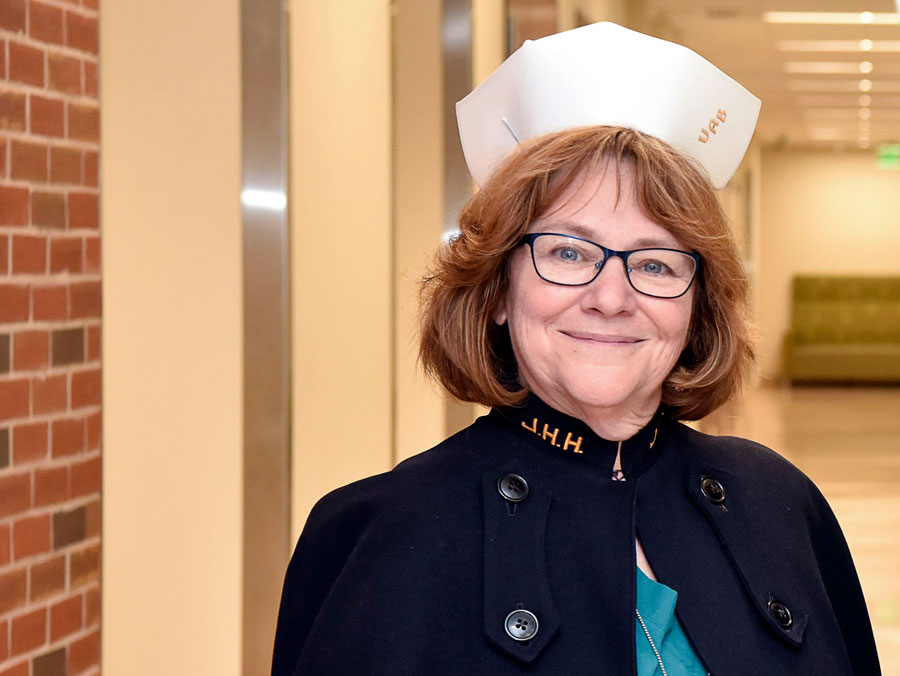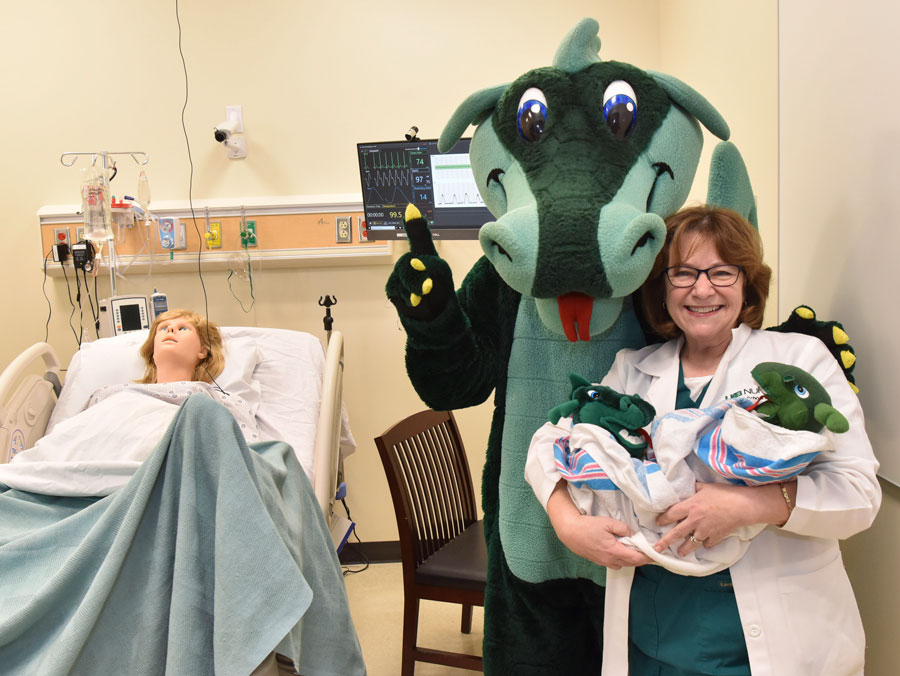 Dr. Roche’s tip for nursing students: My top tip is taken from a winning basketball coach: “Don’t practice until you get it right. Practice until you can’t get it wrong.” And that applies to everything from simulation to studying for the NCLEX or taking practice tests. You can’t practice enough; professional nurses are committed to lifelong learning.
Dr. Roche’s tip for nursing students: My top tip is taken from a winning basketball coach: “Don’t practice until you get it right. Practice until you can’t get it wrong.” And that applies to everything from simulation to studying for the NCLEX or taking practice tests. You can’t practice enough; professional nurses are committed to lifelong learning.
University of Alabama at Birmingham School of Nursing Associate Professor Cathy Roche, PhD, RN, thrives on creative lesson plans, interactive instruction and collaboration.
She joined the School of Nursing in 2014, working in the Office of Technology and Innovation in the School’s skills labs, and has maintained an innovative approach throughout her tenure. Some students first meet her dressed up as if she stepped out of Oz for a lesson called “We’re off to learn the nursing process,” other times, she is wearing a nurse’s cape and cap assigning new students to a Community of Learning Ward. But no matter the occasion, her goal stays the same — to have fun while helping students learn.
“I’ve been a student, as we all have, and we all know those ‘Bueller’ style classes — womp, womp, womp — and that’s just not me,” Roche said. “As a teacher, I need classes to be exciting for me too. Interactive instruction is my teaching style, and keeping students engaged is very important to me. And it makes me so happy when students come back and say, ‘I didn’t get it until now, but after you explained it this way, I understand.’”
As a faculty member, Roche continuously works with her colleagues to innovate and develop new, fun learning strategies for students. She is one of the founders of Coffee in the Collaboratory — a regular get-together where faculty members can bounce ideas off each other and learn about new tools.
 “Having colleagues that love innovation, who think about ways to improve a lesson, and then design content with innovation is so powerful,” Roche said. “We’re able to collaborate together to build on ideas, to share successes. And I think it’s just as important to recognize how nurses collaborate outside of the classroom. As nurses in the hospital, we are always sharing the best tips on how to enhance patient-centered care and using each other’s experience as a resource.”
“Having colleagues that love innovation, who think about ways to improve a lesson, and then design content with innovation is so powerful,” Roche said. “We’re able to collaborate together to build on ideas, to share successes. And I think it’s just as important to recognize how nurses collaborate outside of the classroom. As nurses in the hospital, we are always sharing the best tips on how to enhance patient-centered care and using each other’s experience as a resource.”
A sense of belonging with a shared commitment to each other and the community is the foundation for the UAB School of Nursing’s Communities of Learning. Associate Dean for Technology and Innovation Jacqueline Moss, PhD, RN, FAAN, first envisioned the idea to establish Communities of Learning, which are four groups of BSN students, faculty nurse managers and student charge nurses from other semesters. Students receive their ward assignment at the start of their first semester, and they remain with the same ward throughout all five semesters of the BSN program.
The wards also allow students to interact with faculty from other degree programs and to make connections throughout the school.
“The goal is to enhance the overall school experience, together with their peers and faculty mentors we hope to foster professional development through scholarship, leadership and engagement,” Roche said. “When students come back as alumni, they will be able to connect over memories from their wards.”
On the very first day of their nursing career, Roche introduces them to the “R’s” — respect, resourcefulness, responsibility and resilience. All of these “R’s,” she said, are important tools for being a successful nurse. And when she gets to see those nurses on the other side of graduation and working at the hospital, she knows they are ready to take on whatever comes next.
“Something that brings me great joy is when I walk into the hospital in the morning, and many former students are coming off night-shift, headed to the parking deck and I see them now in their blue scrubs practicing as professional nurses,” she said. “When I do the math, I’ve taught over 1,500 nursing students. It makes me so proud to know that I was a part of preparing them for the next step.”
